Improve Posture to Reduce Pain and Boost Health – More than Standing Up Straight! + VIDEO {Lifestyle Medicine}
Improve Posture for Reduced Pain, Enhanced Autonomic Function and Better Health – More than Standing Up Straight!
{Lifestyle Medicine}
To improve posture you must maintain static and dynamic configuration and stability of the body’s structure and balance. Posture results from a combination of the relative positions of body structure including complete interactions between bones, joints, connective tissues, skeletal muscles and the central and peripheral nervous systems (Kauffman & Bolton, 2014).
Subscribe to my YouTube Channel for more healthy recipes, lifestyle tips and more!
Affiliate Disclosure & Privacy Policy (please review our complete policy here): we use affiliate links and analytics on our website, social media posts and newsletter which utilize cookies placed on your browser to track sales activity. I received products from AlignMed and BackPainHelp but was not paid to write this post; all opinions are my own. This post is NOT sponsored but contains affiliate links. Please review our complete privacy policy here. Thank you for your support! These statements have not bee evaluated by the FDA and should not be considered medical advice or treatment. Please consult your personal health provider before making any changes to your diet or lifestyle.
The spinal column is made up of many vertebrae of different sizes which allow it to change its curvature via adjustments in the tension of muscles, ligaments, joint capsules, skin and viscera which are regulated by the nervous system and modulated by feedback from the vestibular balance system and autonomic nervous system that helps the body maintain its center of gravity.
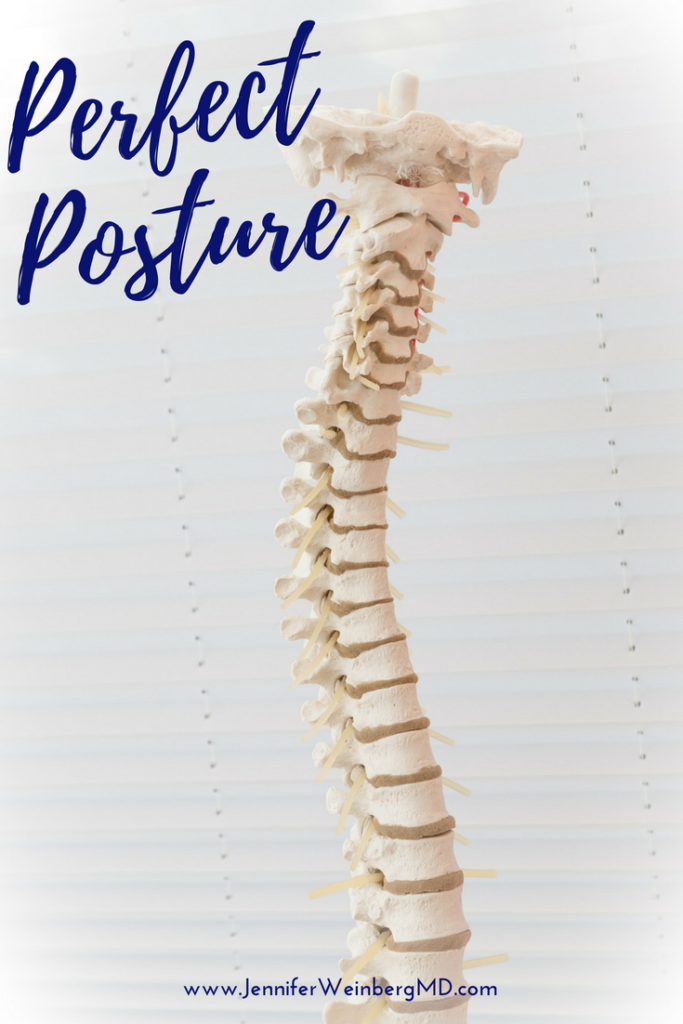 The vertebral column has four basic curves in the normal position:
The vertebral column has four basic curves in the normal position:
- The cervical (neck) curvature is lordotic meaning it bends concave to the posterior (it has convexity in front and concavity behind in the normal position).
- The thoracic (mid back) curvature is kyphotic or bends convex toward the back.
- The lumbar (lower back) curvature is lordotic or concave to the posterior.
- The sacral (tail bone) curvature is convex to the posterior.
“Good” and “Bad” Posture
“Good” posture is often defined as one that puts the least strain on bones, joints and their supporting structures so that you can stand, sit, lie down or move comfortably. When you improve your posture and maintain appropriate alignment it allows you to walk, sit, stand, lie down and move around without placing unnecessary strain on supporting muscles and ligaments which helps you prevent injury and pain.
In contrast, “bad” posture implies misuse or inefficient use of joints and associated muscles and ligaments and other structures which can lead to progressive and, ultimately, irreversible damage and injury with associated physical disability. There are many components and variations of poor posture but some common telltale signs include:
- rounded shoulders,
- protruding buttocks and abdomen,
- overly arched lower back, and
- pushing forward the head in an exaggerated position.
Consequences of Imbalanced Posture
Given these connections, posture impacts and moderates many physiologic functions including respiration, oxygenation, and autonomic nervous system regulation. Therefore, many symptoms may be influenced by posture (Lennon et al., 1994) including:
- pain,
- headaches,
- blood pressure,
- heart rate, and
- lung capacity.
In addition, the way you carry yourself can have psychological impacts as well. According to a 2017 study in Journal of Behavior Therapy and Experimental Psychiatry, people with mild to moderate depression who adopted steps to improve posture experienced less fatigue and anxiety (Wilkes, Kydd, Sagar & Broadbent, 2017).
Attaining good alignment to improve posture is more complex than simply remembering to stand up straight whenever you slouch. Posture in adults is postulated to be related to three main factors:
- genetics/hereditary
- pathology/disease: many conditions can impact posture in different ways ranging from obesity to autoimmune diseases including rheumatoid arthritis and ankylosing spondylitis to pathological scoliosis to injuries and trauma to infections of the spine to connective tissues disorders including Ehlers Danlos Syndrome and Marfan Syndrome.
- acquired habits: this includes how the environment impacts posture due to things like working conditions, technology use, sports activities, ergonomics of furnishing, footwear, stress levels, diets, culture, etc.

Maintaining Balanced Alignment to Improve Posture for Better Health!
Since each individual has different influences over their posture and pain, it is important to work in conjunction with a knowledgeable healthcare provider, physician/or physical therapist when evaluating and addressing postural imbalances and working to improve posture. Those with chronic medical conditions, injuries or other conditions may require different types of individualized approaches to improve posture in order to avoid further injury, pain and imbalance.
In general, when you improve posture it can help take pressure off individual parts of the spine which may help alignment and reduce injury and degeneration. To maintain proper posture, you need to have adequate muscle flexibility and strength, normal joint motion in the spine and other body regions, efficient postural muscles that are balanced on both sides of the spine, proper function and balance of the nervous system and a working vestibular system.
In addition, to improve posture you need to pay attention to daily habits at home and in the workplace. For many with habitual slouching, conscious awareness of your posture can help you consciously correct yourself and rebalance the muscles supporting the spine.
Increase Awareness to Fend off Chronic Pain
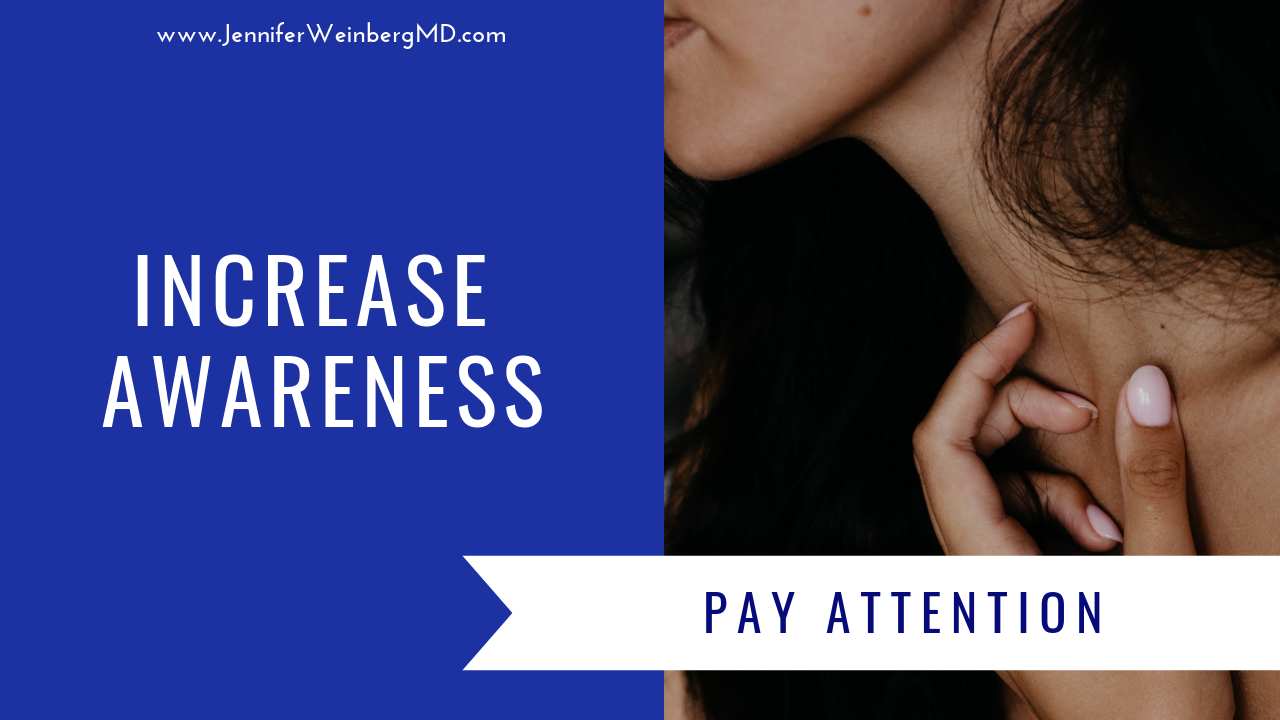
Posture is usually a subconscious behavior. You probably don’t regularly think of how you are holding your postural muscles. Often a person develops imbalanced postural muscles and asymmetry over time. This can lead one shoulder that is higher than the other, a tilted head or an imbalanced gait.
One of the most effective ways to build better posture and reduce chronic pain due to such asymmetry is to become more self-aware. By paying attention to habitual ways of moving and sitting you can then take steps to restore balance by breaking imbalanced habits.
- Set an alarm on your phone for once per hour to remind you to check in with your body throughout the day. During these “posture breaks” become more aware of your posture and how you’re sitting or standing. You may find that you have shifted into bizarre positions without realizing it or are otherwise not aligned.
- When you notice your posture, do the opposite. If you normally sit with your left leg crossed over your right knee, reverse this and cross your right leg over your left knee for example. Try holding the phone with your opposite hand or carry your purse on the opposite shoulder. Over time, this can help rebalance out your muscles and train your mind to become more ambidextrous.
- Relax your shoulders away from your ears with your shoulder blades back. Posture aids such as the Posture Shirt or a Posture Brace (affiliate links) can help you become more aware of your natural posture by retracting the shoulders back into their natural state and bringing awareness to improved postural alignment.
- One option to discuss with your health care professional if you experience frequent neck strain despite proper ergonomics is a neck brace like this lightweight one (affiliate link) that helps make you more aware of your head posture and takes some of the weight of your head off your neck and shoulders. This can help train your body to recognize and maintain proper alignment so that you are able to improve posture.
Strengthen Muscles to Build Good Posture with a Posture Shirt
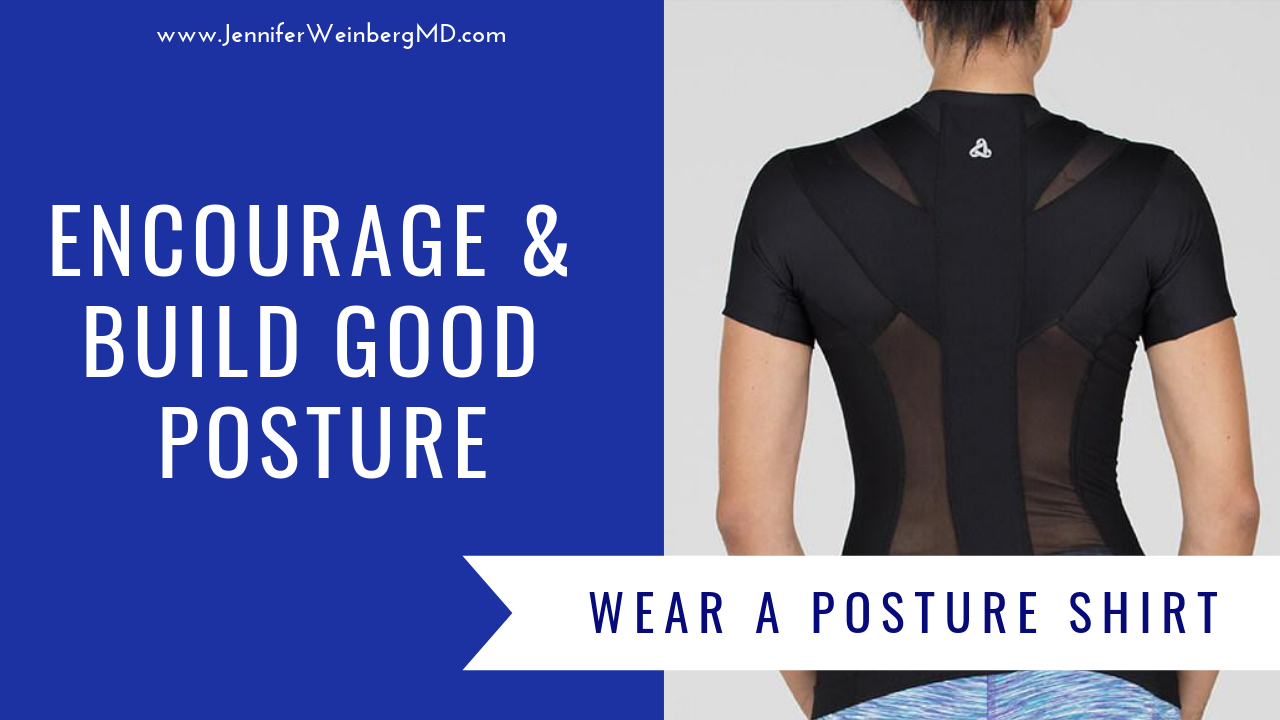
Improper posture, especially in the back and spine, can produce low energy levels and exert significant stress on the spine. Overtime, postural kyphosis can develop which impacts physical and respiratory function, neurologic problems, and back pain.
One way to increase awareness of your postural habits and improve proprioception is with compression and posture garments. Posture shirts like these from AlignMed (affiliate link) are specially-designed dynamic elastic garments that help enhance postural awareness and strengthen supporting muscles. These ergonomic garments harness biofeedback, a method which uses sensory cues to help train the mind to control bodily functions. Overtime, this can improve muscular function by stimulating postural muscles and inducing joint alignment.
A Posture Shirt provides controlled resistance which stimulates your muscles to contract to increase core strength while supporting your spine and shoulders. Studies suggest that consistently wearing such a garment can result in objective improvements in short-term head and shoulder posture, kyphosis, and grip strength, decreases in postural and muscle fatigue, and improvements in subjective energy level and productivity in computer users.
Utilize Props to Sit Properly
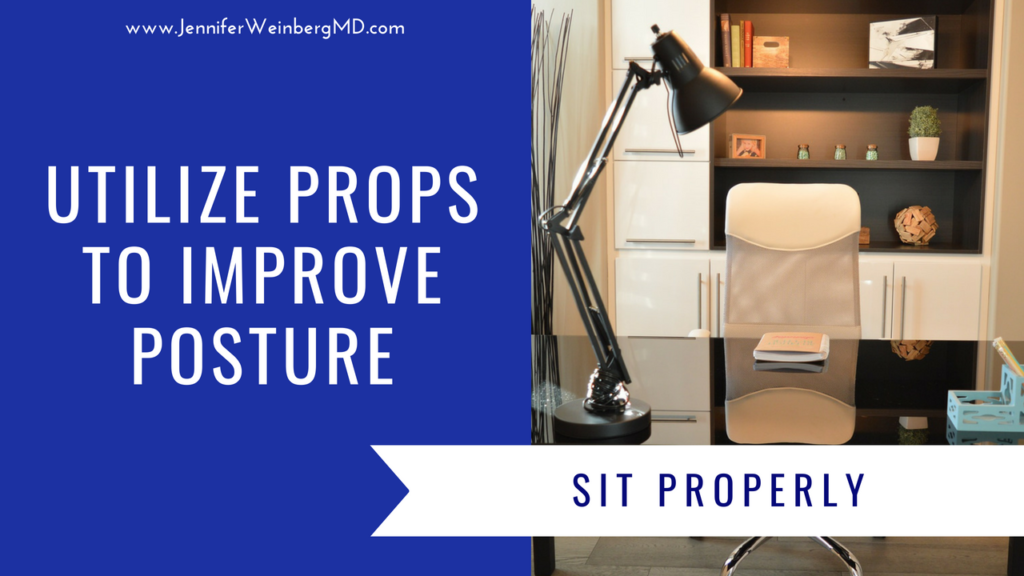
An ideal seated posture allows you to keep your back at a right angle to your thighs and your thighs parallel to the floor with your feet resting flat on the floor. In general, it is recommended to sit up straight, keep legs uncrossed and rest feet flat on the ground to maintain proper alignment of the spine and improve posture when sitting down.
Depending on your size, build and working environment, posture props could help you to maintain a proper posture and avoid strain. Tools such as footrests, lumbar supports, posture braces and cushions can help to ensure your spine is properly aligned while sitting to ensure that you improve posture while working.
- Customize your chair. Select a chair that is properly sized for your body and working needs. All three of the normal back curves should be present and aligned properly while sitting.
- Select an adjustable or customizable desk chair like this one and adjust the backrest of your chair to meet your needs.
- As an alternative, you can consider a back support like this one or a small, rolled-up towel or organic cushion to help you maintain the normal curves in your back.
- Do not cross your legs. Keep your ankles in front of your knees
- Keep your feet flat on the floor or use a footrest if they don’t reach the floor.
- Distribute your body weight evenly on both hips.
Strengthen Your Core
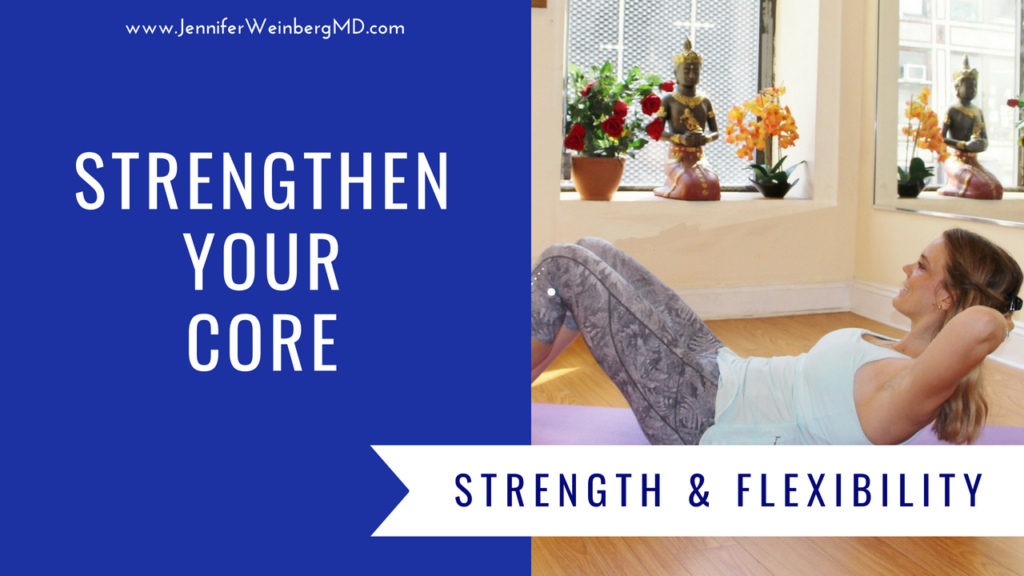
Strong, flexible muscles are important for keeping your spinal curves aligned to improve posture and helping to prevent injury, strain and pain. It is important to maintain proper balance between strength and flexibility, especially in the muscles of the core, hips, back and hamstrings.
The core muscles form a double-walled cylinder with the abdominal muscles at the front, the paraspinals and gluteals at the back, the diaphragm forming the roof, and the pelvic floor and hip girdle musculature at the bottom (Richarson, Jull, Hodges et al., 1999). Balanced core stability helps to maintain proper range of motion in hip flexion and knee extension and should incorporate core exercises that challenge muscle endurance in all planes.
- For some, sitting on a Posture Cushion (affiliate link) can be a great way to increase stability, improve posture and help maintain a stable seated position. This cushion encourages active sitting by engaging postural muscles and strengthening the core. When sitting on this cushion, the body is required to perform continuous micro-movements to stay balanced, which helps to strengthen the core muscles.
- This type of Posture Cushion (affiliate link) can also be used to perform core-strengthening exercises which help to stabilize and improve posture.
- When the core muscles are weak or imbalanced, you may experience increased tightness, stiffness and shortening of the hamstring muscles of the posterior thighs (Kuszewski, Gnat & Saulicz, 2009). This can limit the range of motion of hip flexion and knee extension and contribute to the risk of injury and low back pain.
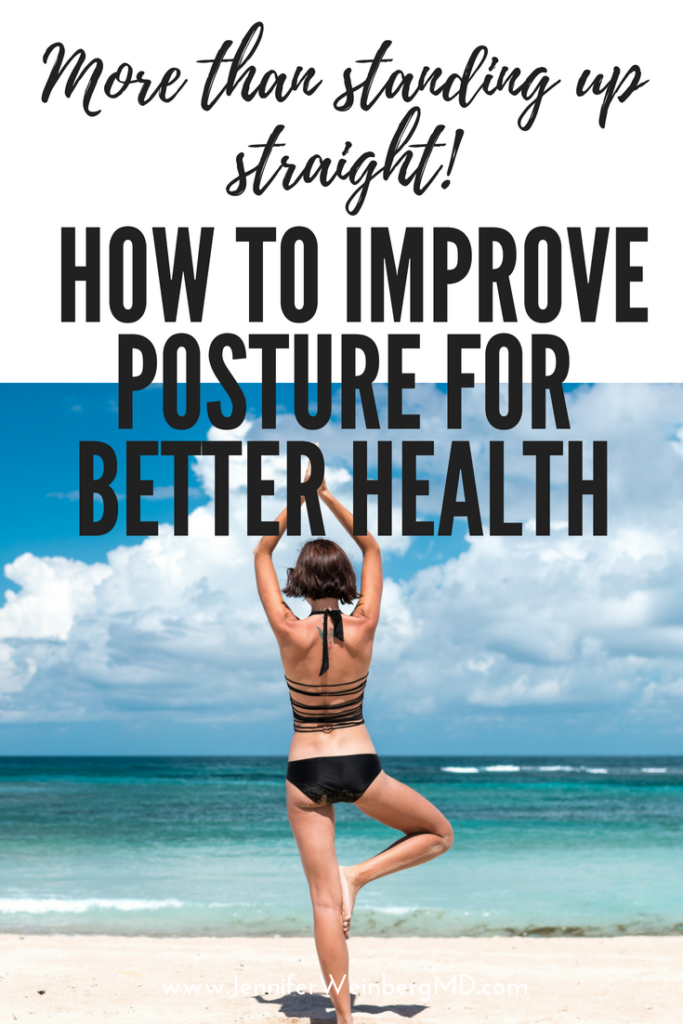
References:
Kauffman T.L., Bolton M.A. (2014). A Comprehensive Guide to Geriatric Rehabilitation (Third Edition).
Kuszewski M, Gnat R, Saulicz E. Stability training of the lumbo-pelvic-hip complex influence stiffness of the hamstrings: a preliminary study. Scandinavian Journal of Medicine & Science in Sports. 2009: 19, 260-266.
Lennon J. et al. (1994). Postural and Respiratory Modulation of Autonomic Function, Pain, and Health. AJPM, 4:36-39.
Richardson C, Jull G, Hodges P, et al. Therapeutic exercise for spinal segmental stabilization in low back pain: scientific basis and clinical approach. London: Churchill Livingstone, 1999.
Wilkes C., Kydd R., Sagar M. & Broadbent E. (2017). Upright posture improves affect and fatigue in people with depressive symptoms. Journal of Behavior Therapy and Experimental Psychiatry, 54:143-149.
Do you deal with imbalanced posture and pain?
Have you used any props to improve posture?
I would love to have you in my Insider’s Community! Join for free to subscribe to my email newsletter and receive your BONUS of FREE Chapters from The Whole Cure: 52 Essential Prescriptions to Overcome Overwhelm, Reclaim Balance and Reconnect with a Life You Love! You can pick up a full paperback or Kindle copy on Amazon (affiliate link) for a wealth of insights, exercises and complete toolkit to help you uncover your true passions, authentic purpose and calm confidence as well!
To keep building your healthy lifestyle and best self through everyday habits, take the next step today to commit to a life you truly love and feel fully alive!
-
Pick up a copy of The Whole Cure (affiliate link) to build resilience and manage stress in a way that makes life flow with greater ease and joy!
-
Access guided relaxation exercises utilizing the power of the breath and mind here.
-
Join my next online group Whole Cure Lifestyle Transformation Programs to build more powerful coping strategies and skills for meaningful stress management and a calmer life! Contact me to form your own guided online group or register for the next scheduled online program!
Medical Disclaimer: Information provided in this post and related resources are for informational purposes only. Jennifer Weinberg is not providing medical advice, diagnosis or treatment information. The information is NOT intended as a substitute for the advice provided by your physician or other healthcare professional. Every body is unique so be sure to check with your healthcare professional before making any dietary or lifestyle changes taking any medication or nutritional supplement or using any treatment for a health issue. Do not use this information provided for diagnosing or treating a health problem or disease. If you suspect you have a medical problem please contact your healthcare provider promptly and do not disregard professional medical advice based on anything on this website. This website and related resources are not intended to diagnose, treat, cure or prevent disease and do not create a doctor-patient relationship between you and Jennifer Weinberg. These statements have not been evaluated by the FDA. These products are not intended to diagnose, treat, cure, or prevent any disease.
This post was shared with: Home Matters Link Party


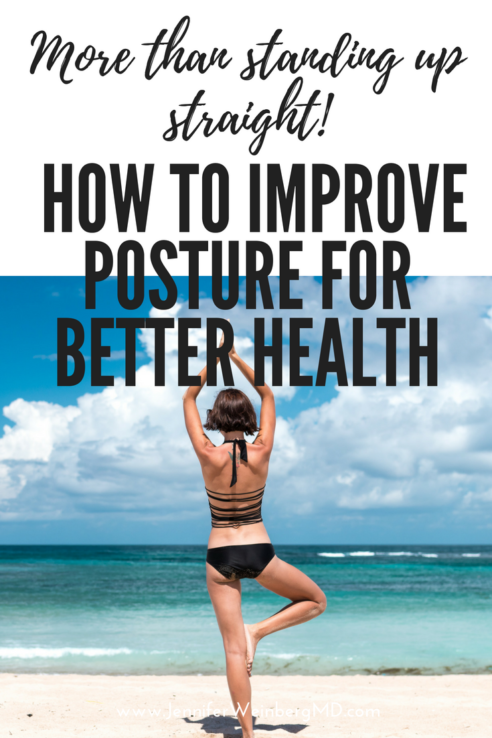

Comments